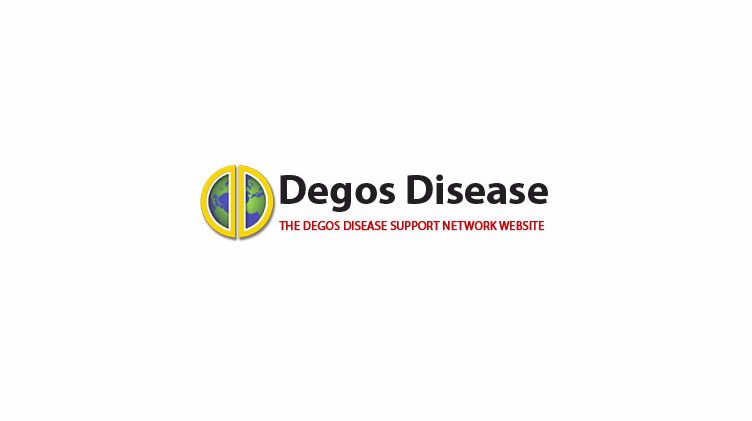My Journey with Degos

In the Fall of 2012, I developed unusual sores on my skin. I was treated with various lotions by a local Physicians Assistant. After almost two years, the only report she could give me, was that she saw such “skin eruptions all the time.” I needed an answer for these skin lesions that now riddled all my limbs and torso. They were inflamed and very tender. It was, even uncomfortable, to wear fitted clothing.
I searched the intranet for answers. I found skin sores that looked exactly like mine. They were pictures of people with Degos disease or Malignant Atrophic Papulosis. I called another local Dermatologist, who agreed with my findings of Cutaneous Degos disease symptoms and confirmed it two ‘punch biopsies’ of my skin lesions.
By this time, my lesions were “burned out,” as per the Dermatologist and they did feel better. The other information I had found on the intranet was very frightening. There were several people with Degos disease, who were diagnosed, only after their deaths, due to bowel perforations and Sepsis. I did not have any abdominal pains then. So, I increased my baby aspirin to twice daily and tried to treat skin lesions on my own.
In October of 2013, I landed in the hospital with severe abdominal pain, cramping, nausea and vomiting. CT Scans revealed small bowel inflammation but doctors had no definite reason or diagnosis for my symptoms. I attempted to educate them about my Degos disease and the possibility of involvement in the gastrointestinal tract. They listened but could not prove or disprove evidence of Degos disease. The symptoms subsided and I was sent home.
I attempted to contact one of the physicians that I had read about on the intranet, who had treated Degos patients. I was not successful. I self-treated by modifying my diet. I stopped eating meat, drinking soda and alcoholic beverages. I began to eliminate processed foods and other foods that seemed to aggravate my abdominal pain. I managed my symptom for about two years.
In the Fall of 2015, abdominal episodes were occurring on a weekly basis. It felt as if my bowel was going to explode. I did not feel confident that any local physicians would know what to do for me.
At that time, God had blessed me with a nephew, Dr. Patrick Schofield, who was completing his residency at Massachusetts General Hospital, where one of the Degos doctors, I had read about, also practiced. My nephew contacted Dr. Patrick Whalen and reviewed my case with him. Dr. Whalen immediately contacted Dr. Lee Shapiro, a Rheumatologist who was treating Degos patient in NY. Dr. Shapiro contacted me and within days, saw me at The Rheumatology Center in Albany, NY. He was sure that I had Systemic Degos disease with gastrointestinal involvement. He gently, but thoroughly explained my immediate need for treatment to prevent life threatening events. He mobilized his dedicated team of professionals, a team of physicians at Hospital University of Pennsylvania, even the media, to fight for my medical needs!
An exploratory laparoscopy confirmed Systemic Malignant Atrophic Papulosis. I had Degos lesions on my entire bowel and throughout my abdominal cavity, including on my liver. By now, I understood that Degos lesions are caused by lack of blood flow to involved areas. Armed with this medical evidence and other documented evidence of his successful treatment of two other patients with systemic Degos disease; Dr. Shapiro appealed to my insurance provider, for approval of Soliris/Eculizumab therapy. I was first denied treatment three times, for lack of medical evidence.
Again, I was blessed that my insurance provider, Highmark Blue Cross and Blue Shield of Northeastern Pennsylvania, had a policy that would allow an independent case review after all appeals within the organization were denied. It was determined that Soliris therapy had documented success in other cases and it was the only known treatment for my very rare disease.
Dr. Lee Shapiro is the most brilliant and dedicated physician. He has been with me and continues to be with me, every step of my journey with Degos disease. Today, I am thriving and continuing to enjoy my life with family and friends.
I hope that my story will help others struggling with Degos disease, on their journeys.
Theresa
